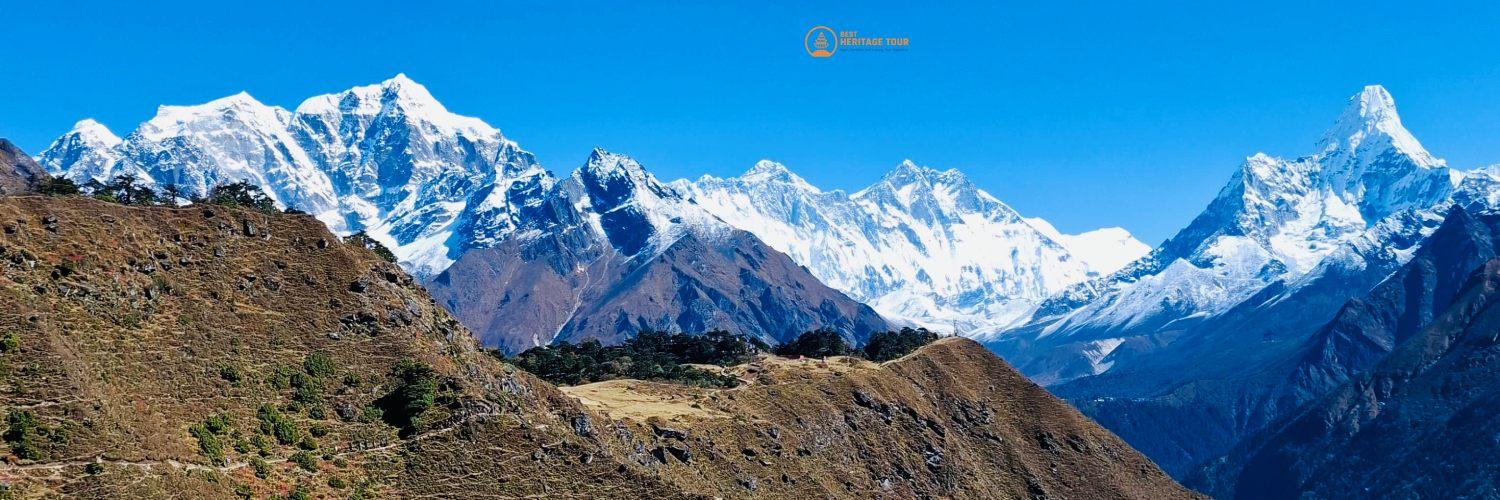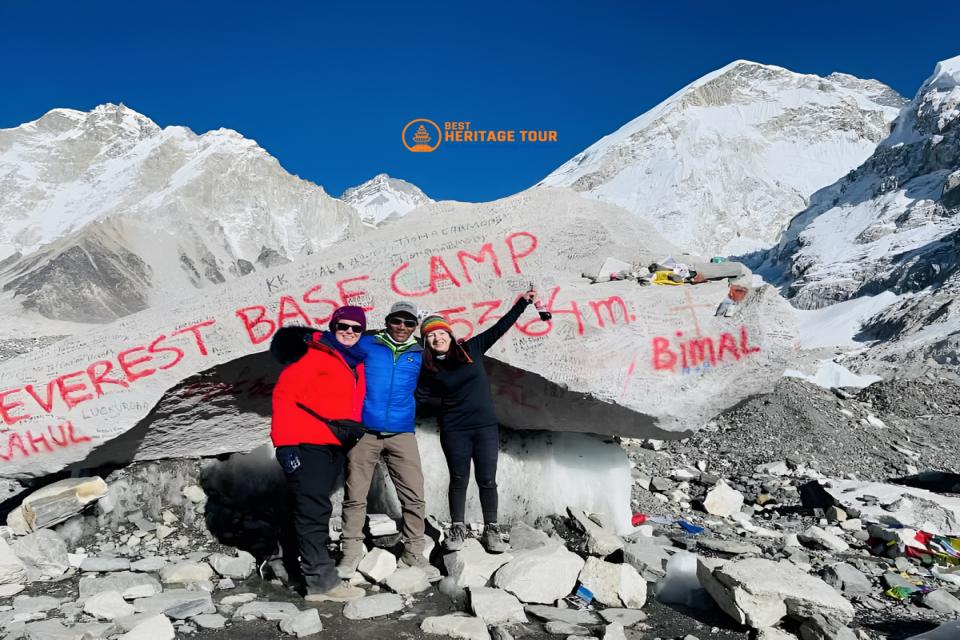For many adventurers, standing at the base of Mount Everest is not just a trek - it’s a life milestone. The Everest Base Camp trek winds through lush rhododendron forests, Sherpa villages, roaring rivers, and high-altitude landscapes before finally bringing you face-to-face with the world’s tallest peak.
But there’s one burning question on every traveler’s mind: “Can I actually trek to Everest Base Camp without a guide?”
At first glance, it may seem possible - after all, the trail is famous and walked by thousands each year. However, the truth is layered with government rules, safety challenges, permit requirements, and cultural insights that can make or break your journey.
In this blog, we’ll explore the reality of going without a guide, why regulations have changed, what risks solo trekkers face, and why choosing a trusted company like Best Heritage Tour is the smarter way to turn your Everest dream into a safe and unforgettable adventure.
What Do the Rules Say About Solo Trekking in Nepal?
Until recently, independent trekking in Nepal was common. Many solo travelers simply packed their bags, grabbed a map, and set off. But things changed in April 2023, when Nepal’s government introduced a new regulation:
All foreign trekkers must hire a licensed guide or porter when trekking in Nepal’s mountainous regions.
This rule was created for several reasons:
-
Safety concerns: Solo trekkers often got lost, suffered from altitude sickness, or needed rescue.
-
Local employment: Hiring guides and porters provides jobs for Nepalese communities.
-
Permit management: To ensure proper registration and tracking of trekkers in remote areas.
Now, some trekkers may argue that the Everest region is an exception. While it’s true that enforcement can be inconsistent in certain checkpoints, the official regulation applies across all trekking routes - including Everest Base Camp.
That means if you try to trek independently, you risk being turned away at checkpoints, fined, or facing major challenges if emergencies occur.
Bottom line: Legally, Everest Base Camp trekking without a guide is not allowed anymore.
Why Solo Everest Treks Are Risky
Even if the law didn’t exist, going without a guide in the Himalayas comes with its own set of dangers. Let’s break them down:
a) Altitude Sickness
The Everest Base Camp trek takes you as high as 5,364 meters (17,598 ft). At this elevation, the air is thin, and the risk of Acute Mountain Sickness (AMS) is very real. A guide knows when to slow down, when to schedule acclimatization days, and how to recognize early symptoms - potentially saving your life.
b) Trail Navigation
The route to EBC is well-marked, but weather can change everything. Snow, fog, or landslides may block trails. Without a guide’s experience, it’s easy to make a wrong turn, especially in lesser-traveled sections or in poor visibility.
c) Emergencies & Evacuation
A twisted ankle, sudden illness, or altitude-related emergency in the Himalayas is no small matter. Guides are trained to arrange helicopter rescues and handle emergency logistics that solo trekkers cannot easily manage.
d) Permits & Paperwork
For the Everest region, you need:
-
Sagarmatha National Park Permit
-
Khumbu Pasang Lhamu Rural Municipality Permit
Trekking agencies and guides handle these for you. Doing it alone means navigating Nepal’s bureaucracy, which can be confusing and time-consuming - especially if you don’t speak Nepali.
e) Accommodation & Logistics
During peak season, tea houses fill up quickly. A guide knows how to pre-book or negotiate rooms. Solo trekkers often find themselves without a place to sleep, especially in popular villages like Namche Bazaar or Gorak Shep.
f) Cultural Connection
The Everest trek is not just about mountains; it’s about people. A guide bridges the cultural gap, sharing stories of the Sherpa community, explaining monasteries, and ensuring you experience the heart of the Himalayas - not just the scenery.
In short: trekking solo might sound adventurous, but it exposes you to unnecessary risks and reduces the richness of the journey.
The Hidden Costs of Going Alone
Some travelers think going without a guide will save money. But here’s the reality:
-
Permit mistakes can lead to fines or denied entry.
-
Last-minute room bookings often cost more.
-
Medical emergencies can wipe out your budget if you don’t have a guide to assist with affordable evacuation.
-
Lost time from misnavigation or miscommunication can cost you precious days.
Instead of saving money, many solo trekkers end up spending more - or worse, cutting their trek short.
The Benefits of Trekking with a Licensed Guide
Hiring a guide doesn’t mean giving up your independence. Instead, it enhances your experience:
-
Safety First - Guides know how to manage altitude, weather, and emergency situations.
-
Stress-Free Trekking - Permits, flights, accommodations - all handled for you.
-
Cultural Enrichment - Learn about Sherpa traditions, local festivals, and hidden gems.
-
Better Connections - Guides often secure better food, rooms, and local experiences.
-
Supporting Locals - Your trip directly contributes to local employment.
Think of it not as an expense, but as an investment in your safety and experience.
Everest Base Camp Trek with Best Heritage Tour
If you’re going to do the Everest Base Camp trek, why not do it with professionals who make the journey effortless, safe, and meaningful?
Here’s why Best Heritage Tour is a trusted choice:
-
Complete Trekking Package: From airport pick-up to Kathmandu hotel stays, domestic flights, permits, meals, and accommodations along the trek - everything is taken care of.
-
Expert Licensed Guides: Knowledgeable, English-speaking guides with years of experience in the Himalayas.
-
Flexible Itineraries: Choose between the 12-day classic EBC trek, the 15-day trek via Gokyo Lakes, or the 17-day Three Passes trek if you want more adventure.
-
Cultural Immersion: Their guides connect you with Sherpa communities, monasteries, and local lifestyles you wouldn’t experience alone.
-
Emergency Support: From arranging rescues to handling altitude sickness, you’re in safe hands.
Final Verdict: Can You Do EBC Without a Guide?
The answer is simple: Not legally, not safely, and not wisely.
Yes, some people still attempt to trek solo, but the risks are high, and the regulations are clear. Why gamble with your health, safety, or once-in-a-lifetime dream?
By going with a trusted company like Best Heritage Tour, you don’t just avoid risks - you gain confidence, cultural depth, and the freedom to fully enjoy the Himalayas without stress.
Conclusion
So, if you’re wondering whether you can do the Everest Base Camp trek without a guide, the clear answer is: You shouldn’t. The government requires guides, and more importantly, your safety and overall experience depend on it.
If reaching Everest Base Camp is your dream, do it the right way - with a professional team that makes every step unforgettable.
Start Your Journey with Best Heritage Tour
Phone: +977-9851149197 / +977-9810043046
Email: info@bestheritagetour.com / bestheritagetour@gmail.com
Website: www.bestheritagetour.com
Office: Thamel Marg, Kathmandu, Nepal
Let Best Heritage Tour take care of the details while you focus on living the adventure of a lifetime. Your path to Everest Base Camp is waiting - are you ready to take the first step?
Author: Best Heritage Tour
Date: 24th August, 2025


